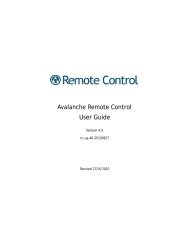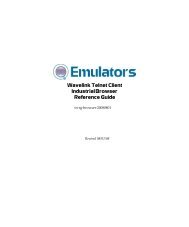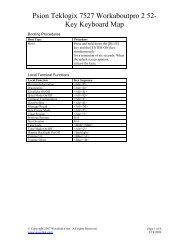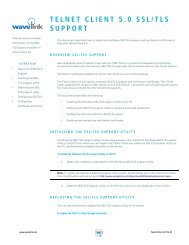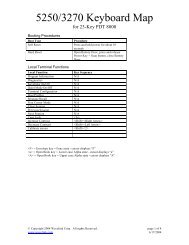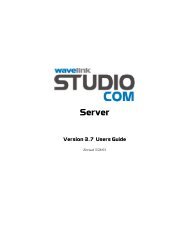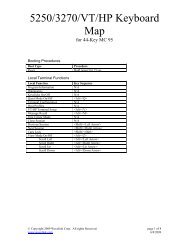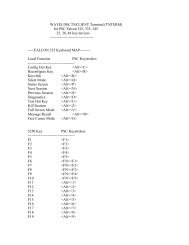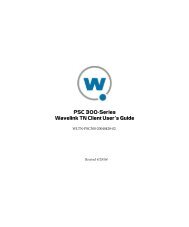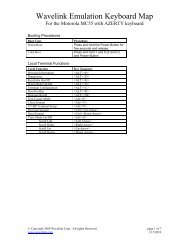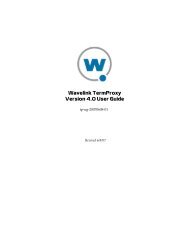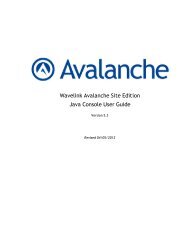Terminal Emulation Client User Guide - Wavelink
Terminal Emulation Client User Guide - Wavelink
Terminal Emulation Client User Guide - Wavelink
You also want an ePaper? Increase the reach of your titles
YUMPU automatically turns print PDFs into web optimized ePapers that Google loves.
Chapter 2: Installation and Licensing 5Host Profiles<strong>Emulation</strong>ParametersScript EditorScreenReformatterKeyboardCreatorResourceEditorLocalizationA host profile contains all of the required information for a mobile device toconnect to a host system, including an alias, IP address, TCP port, and otheremulation-specific parameters. The TE <strong>Client</strong> supports multiple host profilesto allow a user at the device to easily create emulation sessions with varioushost systems. For information on the options available for a host profile, seeConfiguring Host Profiles on page 15.<strong>Emulation</strong> parameters provide control over many aspects of an emulationsession, including key macros, text and screen display, and barcode scanning.You may control the settings of an emulation session on a global level or on aper-host level. For information on setting emulation parameters, see<strong>Emulation</strong> Parameters on page 37.You can automate actions for the TE <strong>Client</strong> using scripting. For example, youmight create a login script for users. You may record scripts, or you may usethe Script Editor to create new scripts or modify existing scripts. Forinformation on creating scripts for the TE <strong>Client</strong>, see Scripting on page 43.The Screen Reformatter (included in TE <strong>Client</strong> 7.1 and later versions) is anapplication that allows you to modify the appearance of TE <strong>Client</strong> emulationscreens. You can create a screen layout that includes items you want themobile device user to see, and does not include items that should not bevisible to the user.Use the <strong>Terminal</strong> <strong>Emulation</strong> Keyboard Creator to modify the standardTE <strong>Client</strong> virtual keyboards to meet the needs of your productionenvironment. The Keyboard Creator allows you to completely modify thelayout of the virtual keyboard for each emulation type. Additionally, importyour own graphic files (bitmaps) to create your own unique buttons for thekeyboard.The Resource Editor allows you to deploy graphic and sound files to yourmobile devices. You may add, modify and deploy any .bmp or .wav fileusing the Resource Editor.Localization allows you to convert strings of text from one language toanother. Use the Localization tool to create conversions, then configure theTE <strong>Client</strong> to use the appropriate language. For example, you might createsupport files to convert server strings from English to Spanish.Import/ExportSettingsIf you have already configured a TE <strong>Client</strong> and you want to use thatconfiguration for other <strong>Client</strong>s, you can import or export settings.This section includes information on using the following configuration/installation options:



